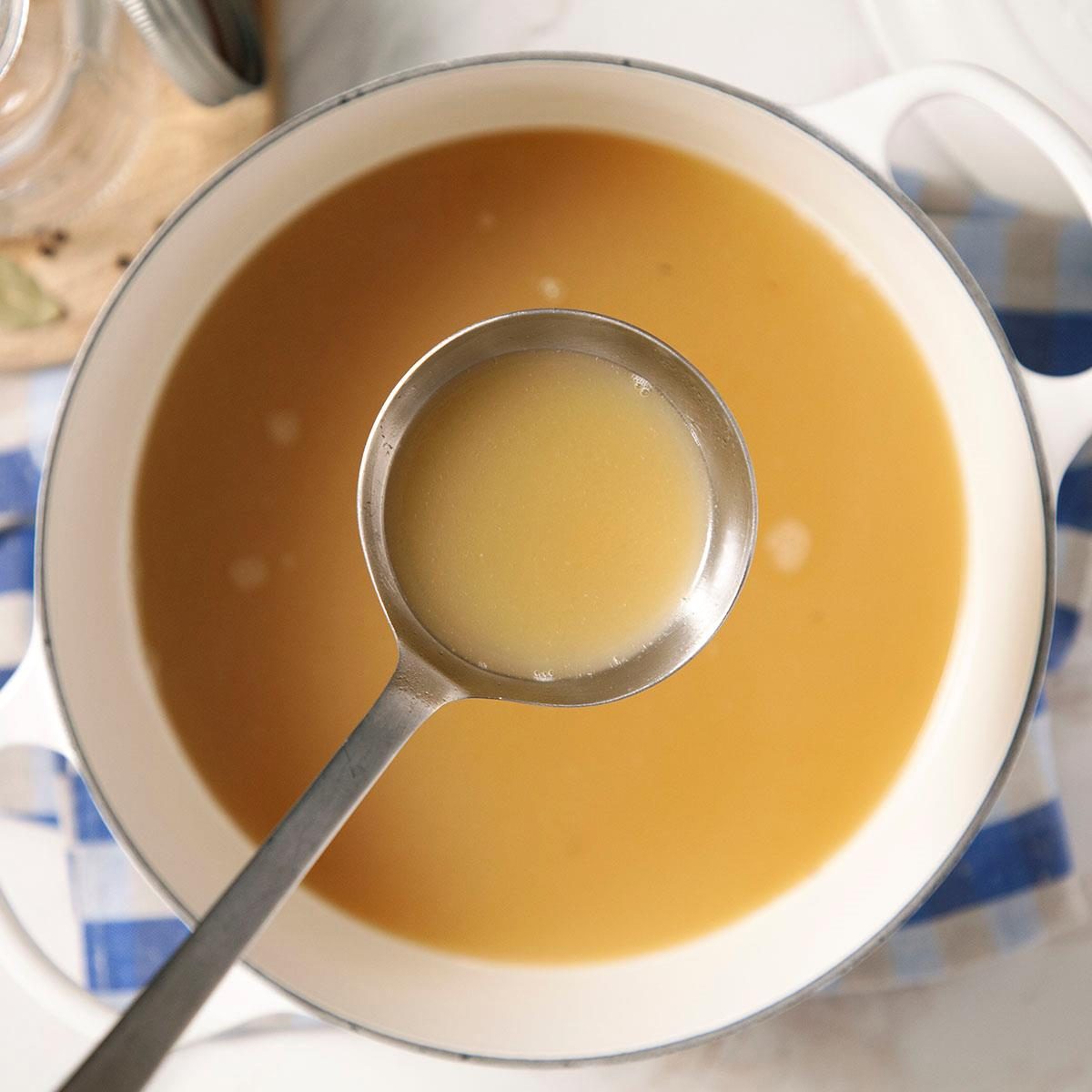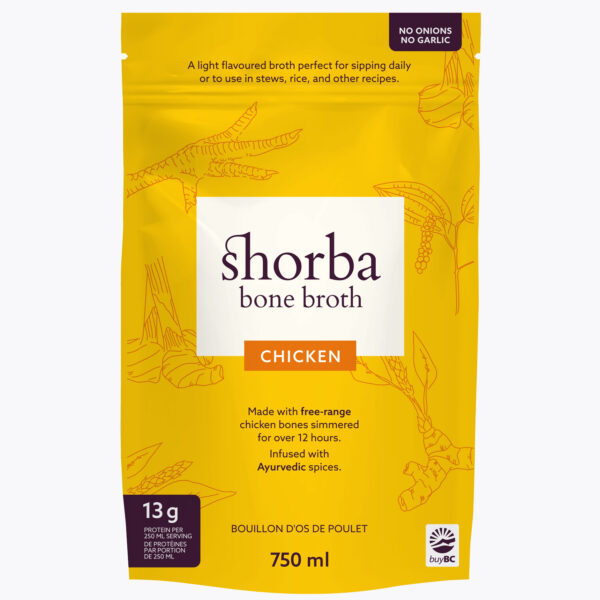Organic Bone Broths for Family Meals That Don’t Take All Day
The Ultimate Guide to Taking Pleasure In and making Organic Bone Broths in your home
Bone brew has actually gained attention for its various wellness advantages and culinary adaptability. Crafting natural bone broth in the house allows individuals to regulate the top quality of active ingredients, ensuring a nourishing outcome. Understanding the choice of bones, crucial flavor components, and proper food preparation strategies is important. As the process unfolds, one might question how to raise their brew past the essentials and integrate it right into day-to-day meals for improved flavor and nutrition.
Comprehending the Health And Wellness Advantages of Bone Broth
Although bone brew has been a staple in various cuisines for centuries, its wellness advantages have obtained significant focus in the last few years. Rich in collagen, amino acids, and minerals, bone brew is frequently proclaimed for its possible to support joint wellness, enhance intestine feature, and boost skin elasticity. The jelly acquired from cooked bones may help food digestion and help secure the digestive tract cellular lining, potentially easing concerns like dripping digestive tract syndrome.Furthermore, the existence of nutrients such as glucosamine and chondroitin might contribute to reduced inflammation and discomfort alleviation in joints. Furthermore, bone brew is hydrating and can work as a nourishing base for stews and soups. Lots of advocates likewise assert that it improves the immune system, thanks to its mineral profile. Generally, the renewal of interest in bone brew is linked to its perceived capability to promote general wellness and support various physical features.
Choosing the Right Bones for Optimum Flavor and Nourishment
What aspects should one take into consideration when selecting bones for brew prep work? The type of bones utilized considerably impacts both flavor and nutritional value. First, it is essential to pick bones that include a mix of marrow bones, joint bones, and weighty bones. Marrow bones supply healthy and balanced fats and rich flavors, while joint bones add collagen, boosting the brew's nutritional profile.Additionally, sourcing bones from grass-fed or pasture-raised animals assurances better and more nutrients, as these animals are usually healthier. The freshness of the bones is also vital; selecting bones from neighborhood butchers or farmers' markets can ensure suitable flavor. Bone size matters also; larger bones launch more jelly, leading to a richer broth. Finally, considering the kind of pet-- chicken, beef, or fish-- can affect the final taste, enabling functional brew choices customized to individual preferences.
Necessary Active Ingredients for a Delicious Bone Brew

Quality Bone Option
The foundation of a tasty bone broth depends on the careful selection of high-grade bones. Sourcing organic, pasture-raised or grass-fed bones is essential, as these alternatives are more probable to be without harmful ingredients and provide remarkable nutrients. Ranges such as poultry, beef, or lamb bones each give distinctive tastes and health benefits. Bone kinds, consisting of marrow bones, knuckle bones, and oxtails, add gelatin and collagen, boosting the broth's structure. Choosing bones with a mix of meat and connective cells can likewise add splendor and depth. Additionally, picking bones with noticeable marrow guarantees a nutrient-dense broth, elevating the general quality. Ultimately, investing time in top quality bone selection prepares for a beneficial and tasty broth.
Aromatic Flavor Enhancers
Selecting high-grade bones establishes the stage for a abundant and nutritious bone brew, however it is the enhancement of aromatic taste enhancers that really elevates the recipe. Components such as onions, garlic, and carrots not just pass on sweet taste however also add deepness to the broth. Fresh natural herbs like parsley, thyme, and bay leaves add an aromatic note, while seasonings such as black peppercorns and cloves introduce heat and intricacy. Furthermore, integrating a dash of apple cider vinegar can help extract minerals from the bones, improving the brew. These taste boosters create a harmonious mix, changing a basic broth right into a tasty structure for stews, sauces, or soups, making it a flexible part in any kind of culinary repertoire.
Step-by-Step Guide to Making Bone Brew in your home
Producing bone brew at home can be a rewarding cooking undertaking that enhances both flavor and nutrition in different recipes. To begin, one must choose top quality bones, preferably from organic or grass-fed resources. Toasting the bones at 400 ° F for about thirty minutes can escalate the flavor. Next off, move the baked bones to a large pot or sluggish cooker and cover them with chilly water. Adding a sprinkle of vinegar aids remove minerals from the bones.Include aromatic vegetables like onions, carrots, and celery for included depth, together with natural herbs and seasonings as preferred. Bring the combination to a boil, after that lower to a simmer. It is important to allow the broth simmer for a minimum of 12 hours, though longer is more effective for optimum richness. Ultimately, pressure the brew through a fine-mesh sieve and shop it in impermeable containers, prepared to elevate meals with its nutritious significance.

Tips for Refining Your Bone Brew Simmer
While simmering bone brew, maintaining the appropriate temperature level and timing is essential for attaining a rich and flavorful result. A mild simmer, ideally in between 190 ° F and pop over to this web-site 210 ° F, helps remove optimum nutrients and tastes without steaming, which can make the broth cloudy. It is recommended to monitor the pot closely, adjusting the warmth as necessary to keep this simmer.Timing is likewise important; a longer simmer, usually ranging from 12 to 48 hours, allows for much deeper flavor removal and collagen launch. For chicken bones, a 12 to 24-hour simmer suffices, while beef bones take advantage of longer food preparation times.Additionally, skimming off any type of foam or impurities that rise to the surface area throughout the initial couple of hours can enhance the broth's quality and taste. Lastly, guaranteeing the pot is covered during simmering helps to keep moisture and magnify the flavors, producing a much more enjoyable end product.
Creative Ways to Use Bone Broth in Your Cooking
Including bone brew right into different recipes boosts both flavor and nutritional value. Chefs and home chefs alike find that using bone broth as a base for soups and stews boosts deepness and splendor, transforming straightforward recipes into passionate dishes. It can likewise be used in risottos, where the broth replaces water, allowing the grains to absorb its savory essence.Additionally, bone brew acts as an outstanding cooking fluid for grains like quinoa or rice, infusing them with nutrients and flavor. For an included spin, it can be utilized in braising meats, resulting in tender, tasty outcomes. Even sauces gain from a sprinkle of bone broth, enriching their taste profile.Moreover, bone brew can be included right into shakes for an unanticipated wellness boost, giving healthy protein and nutrients without compromising preference. These imaginative applications showcase the convenience of bone broth in day-to-day food preparation, making it an important kitchen area staple.
Keeping and Preserving Your Self-made Bone Brew
Proper storage and conservation of homemade bone broth is essential for maintaining its taste and nutritional benefits. Cold methods and refrigeration finest methods play a vital function in prolonging the brew's rack life. Understanding these approaches can help ensure that the broth remains delicious and safe for future usage.

Icing Up Methods Discussed
Freezing techniques are crucial for properly saving and protecting home made bone broth, guaranteeing its abundant tastes and nutrients remain undamaged for future use. To ice up bone brew, it is a good idea to allow it trendy totally before moving it to storage containers. Glass jars, silicone molds, or heavy-duty fridge freezer bags are appropriate options. When making use of jars, leave area at the top for development throughout freezing. Portioning the brew into smaller sized quantities enables for simple thawing and lessens waste. Label containers with the day and components for simple recognition. For peak quality, eat the frozen brew within three to 6 months - Bone Broth Delivery. Defrosting can be done in the fridge or by utilizing a microwave, guaranteeing that the brew is heated extensively Continue before intake
Refrigeration Best Practices
While numerous emphasis on freezing as an approach of preservation, refrigeration likewise plays an important duty in storing homemade bone broth efficiently. Once cooled, bone broth should be moved to closed containers, ensuring very little air direct exposure to stop wasting. It is advisable to refrigerate brew within two hours of food preparation to keep its quality. Typically, homemade bone brew can be saved in the refrigerator for approximately 5 days. Classifying containers with dates can help track quality. For peak flavor and safety and security, broth needs to be reheated to a moving boil before intake. If longer storage is needed, cold continues to be an excellent choice, yet proper refrigeration methods ensure that bone brew remains delicious and nutritious for temporary use.
Often Asked Concerns
Can I Use Frozen Bones for Making Bone Brew?
The inquiry of making use of icy bones for bone broth emerges regularly (Beef Broth). Professionals agree that frozen bones can be made use of properly, continue reading this but they need to be defrosted prior to cooking to assure optimal taste and nutrient extraction
For How Long Can I Shop Homemade Bone Broth?

Is It Safe to Reheat Bone Brew Multiple Times?
Reheating bone brew several times can position safety worries - Bone Broth Delivery. Each reheating cycle increases the danger of bacterial growth. It is recommended to reheat only once and store any leftovers without delay to ensure security and quality
Can I Include Vegetables to the Brew for Taste?
Adding vegetables to brew improves flavor and dietary worth. Typical options consist of carrots, onions, and celery. The vegetables instill their essence into the brew, creating a richer and extra savory final product.
What's the most effective Means to Defrost Icy Bone Brew?
To defrost icy bone brew, one can place it in the fridge overnight, use a microwave on low warmth, or submerge the secured container in cozy water, making certain even thawing without endangering taste or nutrients. It is important to pick bones that consist of a mix of marrow bones, joint bones, and meaningful bones. Marrow bones provide healthy fats and rich flavors, while joint bones contribute collagen, enhancing the broth's nutritional profile.Additionally, sourcing bones from pasture-raised or grass-fed pets guarantees greater top quality and more nutrients, as these pets are usually healthier. Bone types, consisting of marrow bones, knuckle bones, and oxtails, add gelatin and collagen, improving the broth's texture. Picking premium bones establishes the stage for a rich and nutritious bone brew, however it is the enhancement of fragrant flavor enhancers that genuinely raises the dish. Also sauces profit from a sprinkle of bone broth, improving their preference profile.Moreover, bone broth can be incorporated into shakes for an unanticipated health boost, giving healthy protein and nutrients without endangering taste.